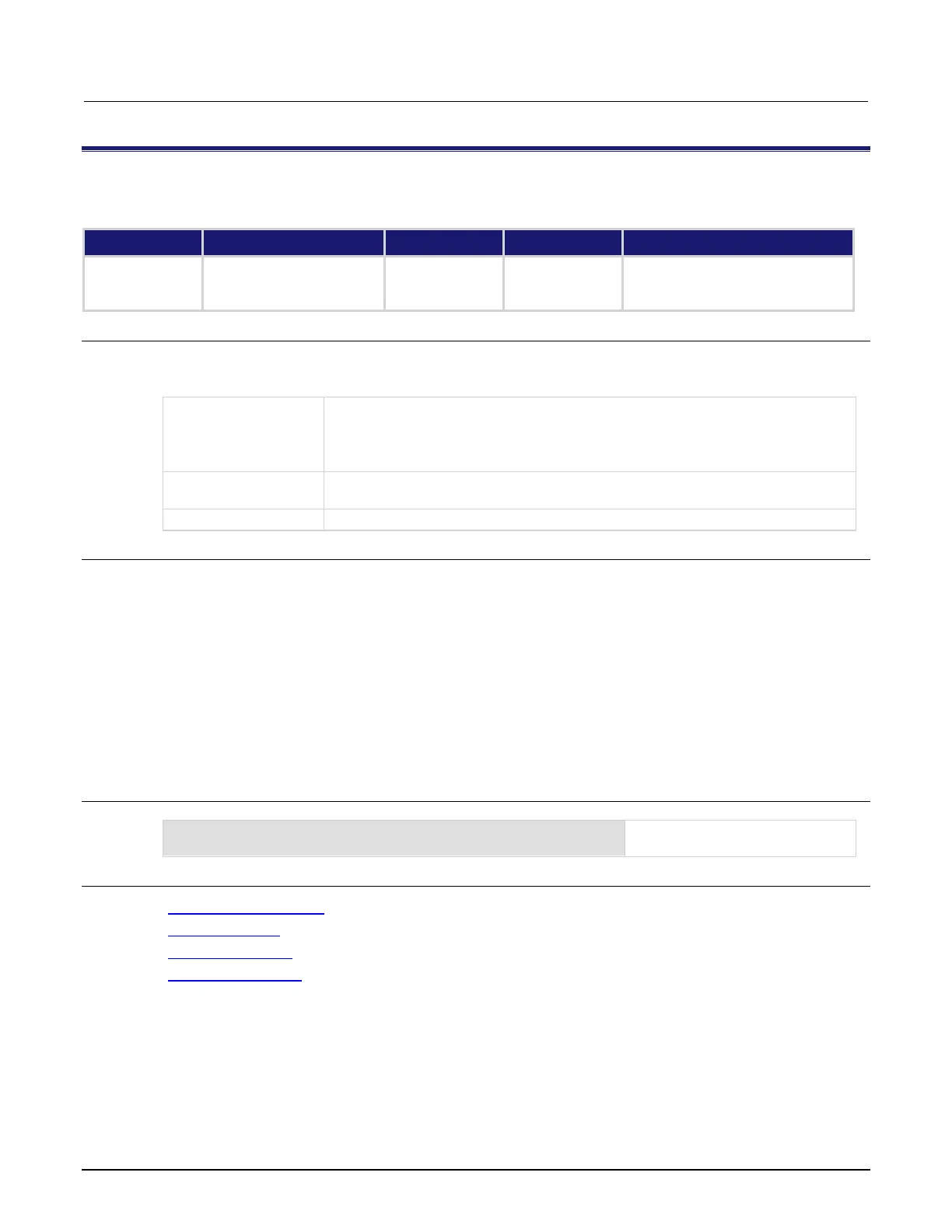Model 2651A High Power System SourceMeter® Instrument Reference Manual Section 7: Command reference
2651A-901-01 Rev. A / March 2011 7-217
smuX.source.limitY
This attribute sets compliance limits.
Type TSP-Link accessible Affected by Where saved Default value
Attribute (RW) Yes SMU reset
Instrument reset
Recall
Saved setups Limit voltage: 20 (20V)
Limit current: 100e-3 (100 mA)
Limit power: 0 (disabled)
Usage
limit = smuX.source.limitY
smuX.source.limitY = limit
limit
The compliance limit value. Set to one of the following values: Set voltage
compliance from 0 V to 40 V
Set current compliance from 0 A to 20 A
Set power compliance in watts.
X
Source-measure unit (SMU) channel (for example, smua.source.limitv applies
to SMU channel A)
Y
SMU function (v = voltage, i = current, p = power)
Details
Use the smuX.source.limiti attribute to limit the current output of the voltage source. Use
smuX.source.limitv to limit the voltage output of the current source. The SMU will always choose
(autorange) the source range for the limit setting. Use the smuX.source.limitp attribute to limit the output
power of the source. This attribute should be set in the test sequence before the turning the source on.
Using a limit value of 0 will result in a "Parameter Too Small" error message (error 1102) for v and i. Setting
this attribute to zero disables power compliance for p. When setting the power compliance limit to a nonzero
value, the SMU will adjust the source limit where appropriate to limit the output to the specified power. The SMU
will use the lower of the programmed compliance value (the compliance level that would be used if power
compliance were disabled) or the limit calculated from the power compliance setting.
Reading this attribute indicates the presently set compliance value. Use smuX.source.compliance to read
the state of source compliance.
Example
smua.source.limitv = 30
Sets voltage source compliance of
SMU Channel A to 30 V.
Also see
smuX.source.compliance (on page 7-213)
smuX.source.func
(on page 7-214)
smuX.source.output
(on page 7-221)
DUT test connections
(on page 2-42)

